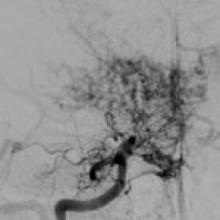August 2022
A previously healthy 30-year-old woman was admitted to the emergency department with severe right temporoparietal headache followed by left motor and sensory deficit. Neurologic examination evidenced a left hemiparesis (grade 4) and hemianesthesia. Complete clinical recovery ensued in 3 hours.







